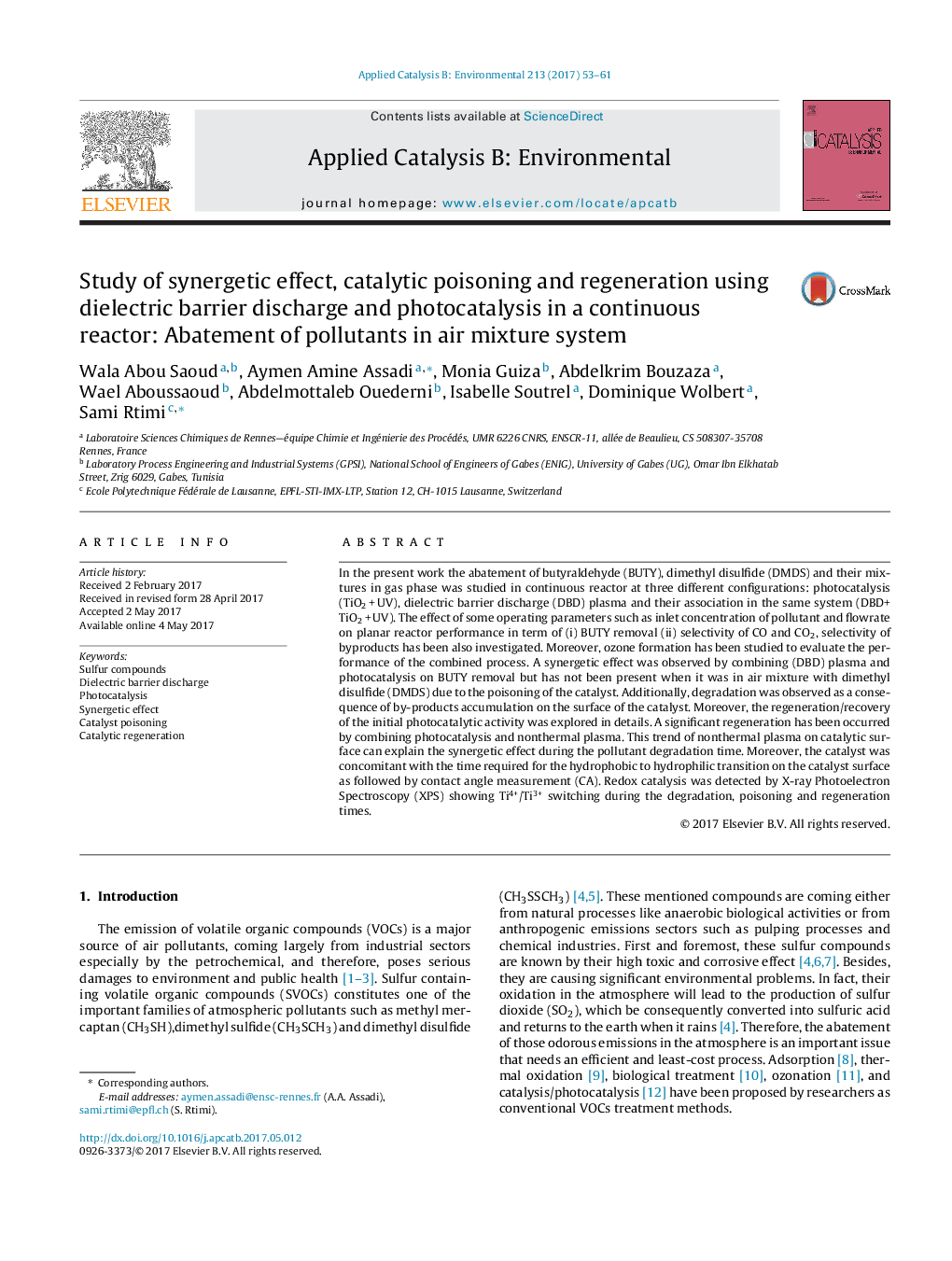| کد مقاله | کد نشریه | سال انتشار | مقاله انگلیسی | نسخه تمام متن |
|---|---|---|---|---|
| 6453872 | 1418807 | 2017 | 9 صفحه PDF | دانلود رایگان |
- Removal of pollutant in air mixture by photocatalysis and plasma is studied.
- Synergetic effect of combined system is explored.
- Poisoning TiO2 deposed on fibre-glass is investigated.
- Abilities of catalytic regeneration with different processes were studied.
- XPS analysis of poisoned and plasma regenerated catalyst were done.
In the present work the abatement of butyraldehyde (BUTY), dimethyl disulfide (DMDS) and their mixtures in gas phase was studied in continuous reactor at three different configurations: photocatalysis (TiO2Â +Â UV), dielectric barrier discharge (DBD) plasma and their association in the same system (DBD+ TiO2Â +Â UV). The effect of some operating parameters such as inlet concentration of pollutant and flowrate on planar reactor performance in term of (i) BUTY removal (ii) selectivity of CO and CO2, selectivity of byproducts has been also investigated. Moreover, ozone formation has been studied to evaluate the performance of the combined process. A synergetic effect was observed by combining (DBD) plasma and photocatalysis on BUTY removal but has not been present when it was in air mixture with dimethyl disulfide (DMDS) due to the poisoning of the catalyst. Additionally, degradation was observed as a consequence of by-products accumulation on the surface of the catalyst. Moreover, the regeneration/recovery of the initial photocatalytic activity was explored in details. A significant regeneration has been occurred by combining photocatalysis and nonthermal plasma. This trend of nonthermal plasma on catalytic surface can explain the synergetic effect during the pollutant degradation time. Moreover, the catalyst was concomitant with the time required for the hydrophobic to hydrophilic transition on the catalyst surface as followed by contact angle measurement (CA). Redox catalysis was detected by X-ray Photoelectron Spectroscopy (XPS) showing Ti4+/Ti3+ switching during the degradation, poisoning and regeneration times.
Photograph of plasma DBD generated on catalytic surface in planar reactor.172
Journal: Applied Catalysis B: Environmental - Volume 213, 15 September 2017, Pages 53-61
